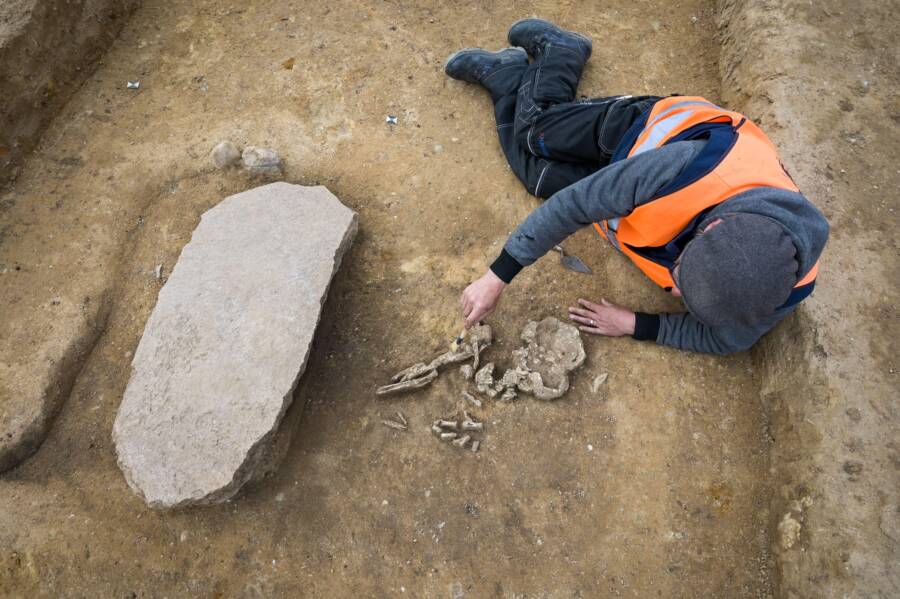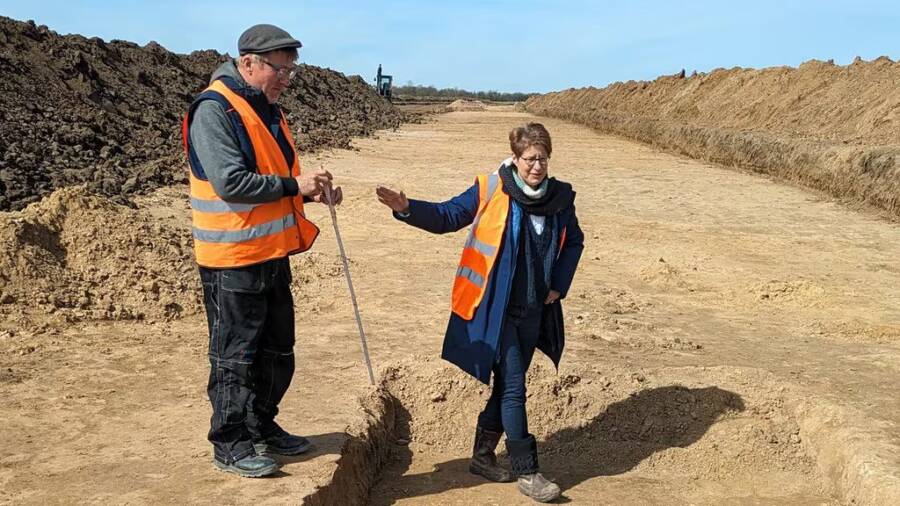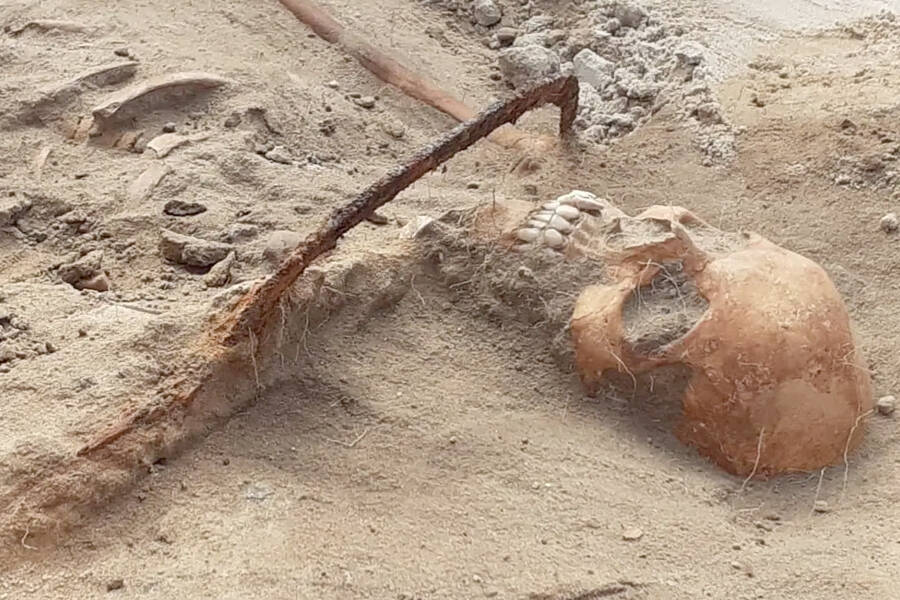The ancient grave found near Oppin in Saxony-Anhalt, Germany, was found with a large stone inside, presumably to keep the "zombie" from rising from the dead.

State Office for Monument Preservation and Archaeology Saxony-Anhalt, Anja Lochner-RechtaThere are many reasons why Stone Age people might have wanted to prevent someone from rising from the dead.
Over 4,000 years ago, a man was buried in present-day Germany. He wasn’t merely laid to rest, however. His countrymen took steps to ensure that he’d stay buried — by placing a huge stone on his body.
This “zombie grave” was recently unearthed by archaeologists, and it likely represents a Stone Age fear of revenants, or people who rose from the dead.
Discovering The ‘Zombie Grave’ In Saxony-Anhalt
During excavations ahead of an underground power line project near Oppin, Germany, in the state of Saxony-Anhalt, archaeologists came across the grave of a 40- to 60-year-old man who was buried some 4,200 years ago. Archaeologists believe that the man was a member of the Bell Beaker culture, a Bronze Age group that emerged around 2800 B.C.E. and spread across Western Europe.
“It is an adult man, around 40 to 60 years old,” Uwe Moos, the excavation manager, explained to local media in Germany. “He is lying on his left side with his legs bent and looking to the east.”
However, there was something unusual about the grave.

dpa picture alliance / Alamy Stock PhotoUwe Moos excavating the “zombie grave” near Oppin, Germany.
“Across his lower legs,” Moos continued, “lies a large stone, about one meter [three feet] long, 50 centimeters [20 inches] wide and ten centimeters [four inches] high.”
The stone, archaeologists believe, was meant to pin the man in place and keep him from rising from the dead as a “revenant.”
Who Was The Man Buried As A ‘Revenant’?
Thousands of years ago, ancient people feared “revenants,” reanimated corpses that could rise from their graves like modern-day zombies. Such fearsome spirits appear in mythology across Europe.
“We know that even in the Stone Age people were afraid of unpleasant revenants,” Susanne Friederich, an archaeologist and the head of the archaeological monument preservation department, told local media.
In an email to All That’s Interesting, Friederich further remarked: “The grave came as a surprise as revenant burials are not well-attested for the Bell Beaker Culture. There are a few of these graves, particularly from the Middle Ages. In prehistoric times, they occur occasionally.”

State Office for Monument Preservation and Archaeology Saxony-Anhalt, Anja Lochner-RechtaUwe Moos and Susanne Friederich are part of the archaeological team that discovered the “zombie grave” near Oppin, Germany.
“People wanted to prevent [revenants] with magic,” Friederich further explained to All That’s Interesting. “Sometimes, the dead were laid on their stomachs. Back then, people believed that dead people sometimes tried to free themselves from their graves. If the dead lies on his stomach, he burrows deeper and deeper instead of reaching the surface. There are also bodies additionally pierced with a lance, in order to fix them in the ground.”
So, who was the man buried with a large stone over 4,000 years ago?
According to Moos, he may have been unloved during his time. Or he may have suffered from a serious illness.
“The heavy stone was supposed to prevent them from coming back,” Moos said.
The practice of keeping a dead body in its grave continued far beyond the Neolithic period. In the Middle Ages, people sometimes went to great lengths to keep someone buried if they had died by suicide or if their contemporaries believed they were possessed by evil spirits.
Even bodies from as late as the 17th, 18th, and 19th centuries were treated as revenants. In Poland, archaeologists have found bodies buried with a sickle across their neck and with bricks weighing them down. In these cases, people feared that the dead would come back as vampires.

Miroslav Blicharski/AlexsanderThis “vampire” grave was discovered in Pień, Poland, and belonged to a woman buried in the 17th century.
Archaeologists will continue to examine the site until 2025 ahead of the construction of the new “electric highway.” Given that the area is approximately 90 miles long (150 kilometers), who knows what archaeologists may come across in their excavations next?
After reading about the “zombie grave” in Oppin, Germany, look through these mind-blowing facts about zombie mythology. Or, discover the eerie true story of Germany’s Frankenstein Castle.





